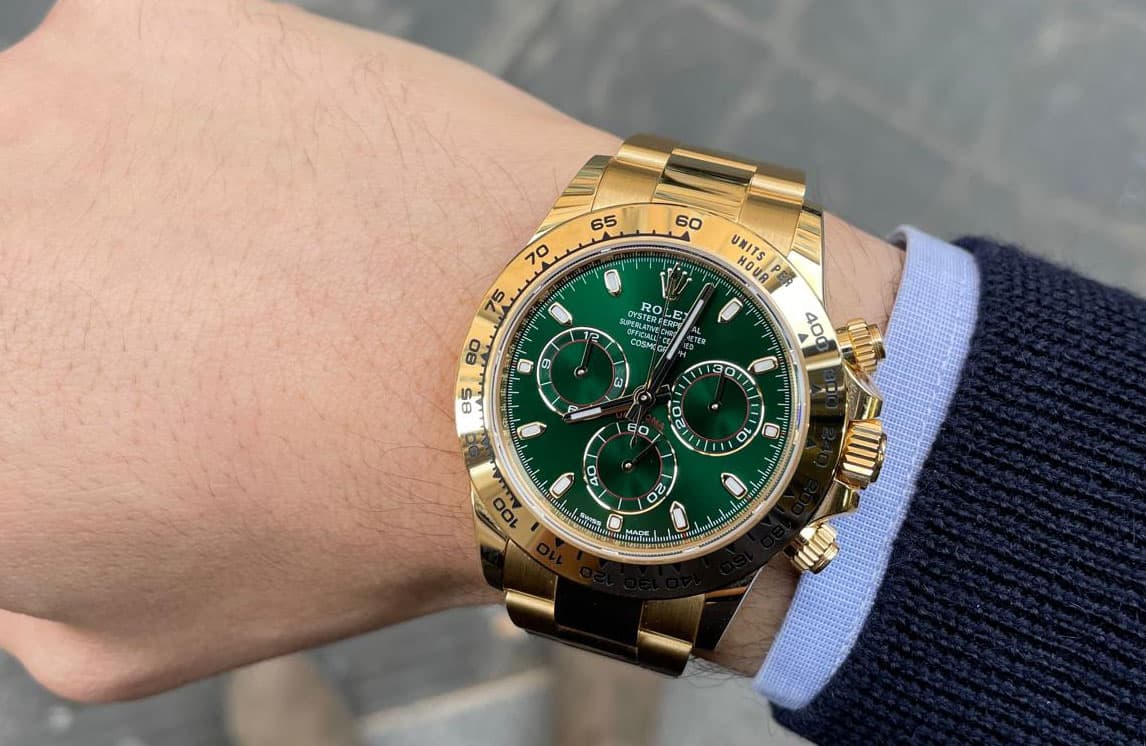As previously described in the article pertaining to the Rolex 16520 Floating, we are talking about 300 or so porcelain (another often-used name) products.
We recall some news from the previous article, to remind you how much work went into this watch.
The parent company chose as the caliber (mechanism) to be used the "Zenith 400 El Primero," with 36000 vibrations and a frequency of 5 HZ, using a special dry lubricant based on Molybdenum Bisulfide applied by a vaporization process, which required special equipment and maintenance every two years or so. The Zenith El Primero base caliber was then profoundly elaborated, so much so that 200 modifications were needed so that it could be equaled to the brand's quality standards.
The first, necessary, work was done to reduce the number of alternations (from 36000 to 28000) and decrease the frequency from 5 to 4 HZ. They mounted a larger balance wheel on the movement that oscillated at a lower frequency, common to all calibres Rolex of the time, so as to simplify and improve the reliability of that movement.
The balance wheel Rolex has four glucydur spokes with spiral Breguet and micro-star adjustment system. The lubricants used for the 4030 were the traditional fluid ones, such changes allow Rolex to recommend an overhaul every 4 years, almost twice as long as the original caliber.
The 4030 movements mounted on the Daytona first series serial R ref.16520/3/8 have numbering between 10000 and 20000 (random numbering that also takes into account the next serial L). The earliest bezels (for taking speed measurements) were at 200.
One of the designers of this watch, often traveling to Paris on a high-speed train, spent time amusing himself by measuring speed with his Daytona 16520 (one of the prototypes which, as such, had no serial and mounted test dials). The train was traveling at much more than 200km/h, so he realized that for the modern world a meter with a scale at 200 was insufficient and proposed to redesign the scale with a higher limit (400 uph. The first one was made with intermediate at 225).
Another interesting feature is the Floating dial, thought to be produced in one hundred examples of each version (gold, steel and gold, and steel; the latter rarer than the equal gold and steel and gold types as dials). This manufacturing process was very long and complex, involving exposure to high-temperature ovens and then the application of lettering. Depending on the level of drying of the dial at the time the inscriptions were placed created the various levels of floating (porcelain 1/2/3 level).
It is always too little that we can shed light on. What to add: today this watch is called the Paul Newman of automatics, and it is thought that of Paul Newman with screw-down buttons and manual winding, about 300 have been produced, with values ranging from a minimum of about 300,000 euros to a maximum of about 500,000 euros for the normal versions, while others of extreme rarity, due to different characteristics, have values even higher than 1,000,000 euros.
As mentioned above, about 100 automatic Porcellanati were produced in steel, 100 in steel and gold, and 100 in gold. To date, the market valuations are extremely lower than those of the hand-wound progenitors, the rest is up to your evaluations.
We enclose photos of the watch and, as is our wont, illustrate with a graph the trend in value over the various years, showing the cost that the object had originally and the corresponding price today; we also point out how much over the years it has revalued.
The watch in question, for a standard model, cost about 20,000,000 Lire in 1989, corresponding to today's purchasing power of € 20,643.82. As of today it has reached a value of € 50,000, more than double its initial value.
This shows the great appreciation and thus the great investment this watch has made.
We at Bonanno Jewelry have a large collection of Vintage watches.

